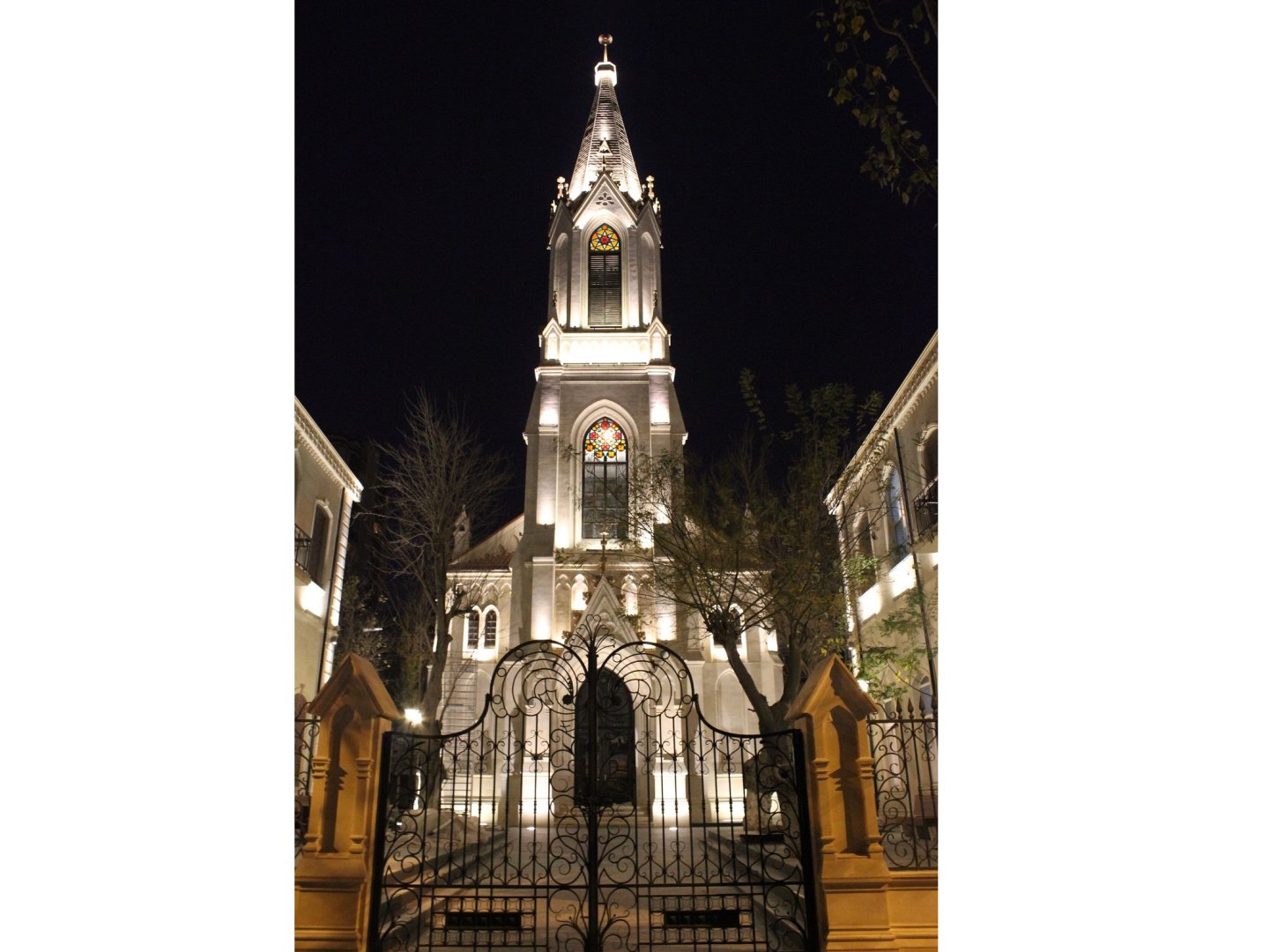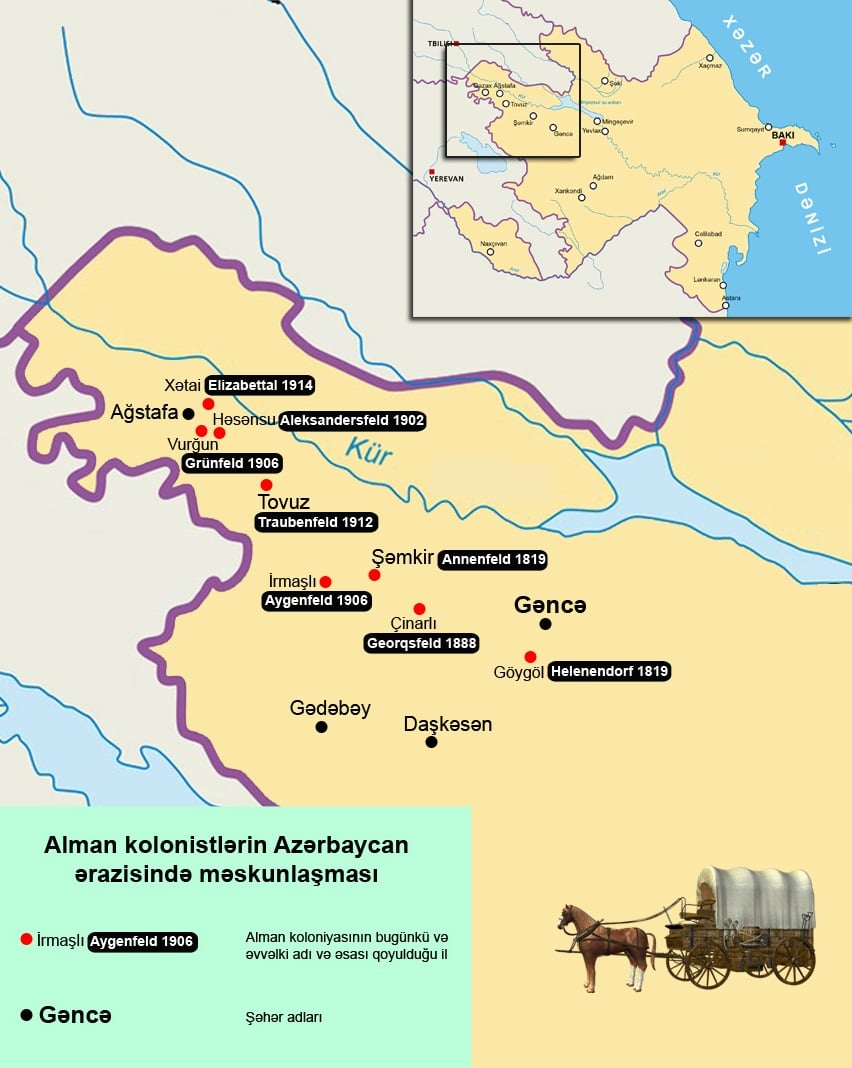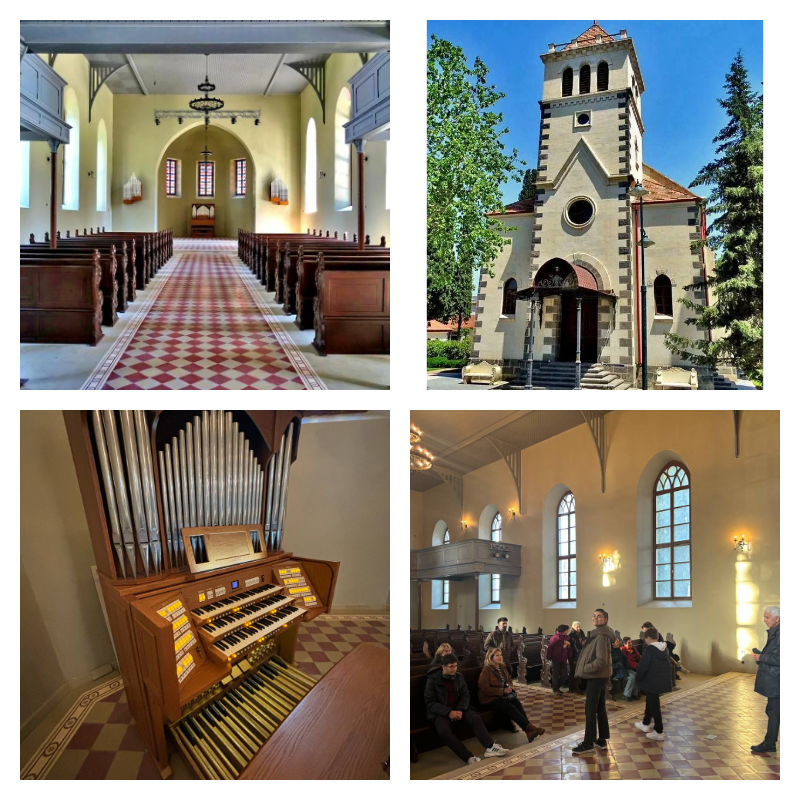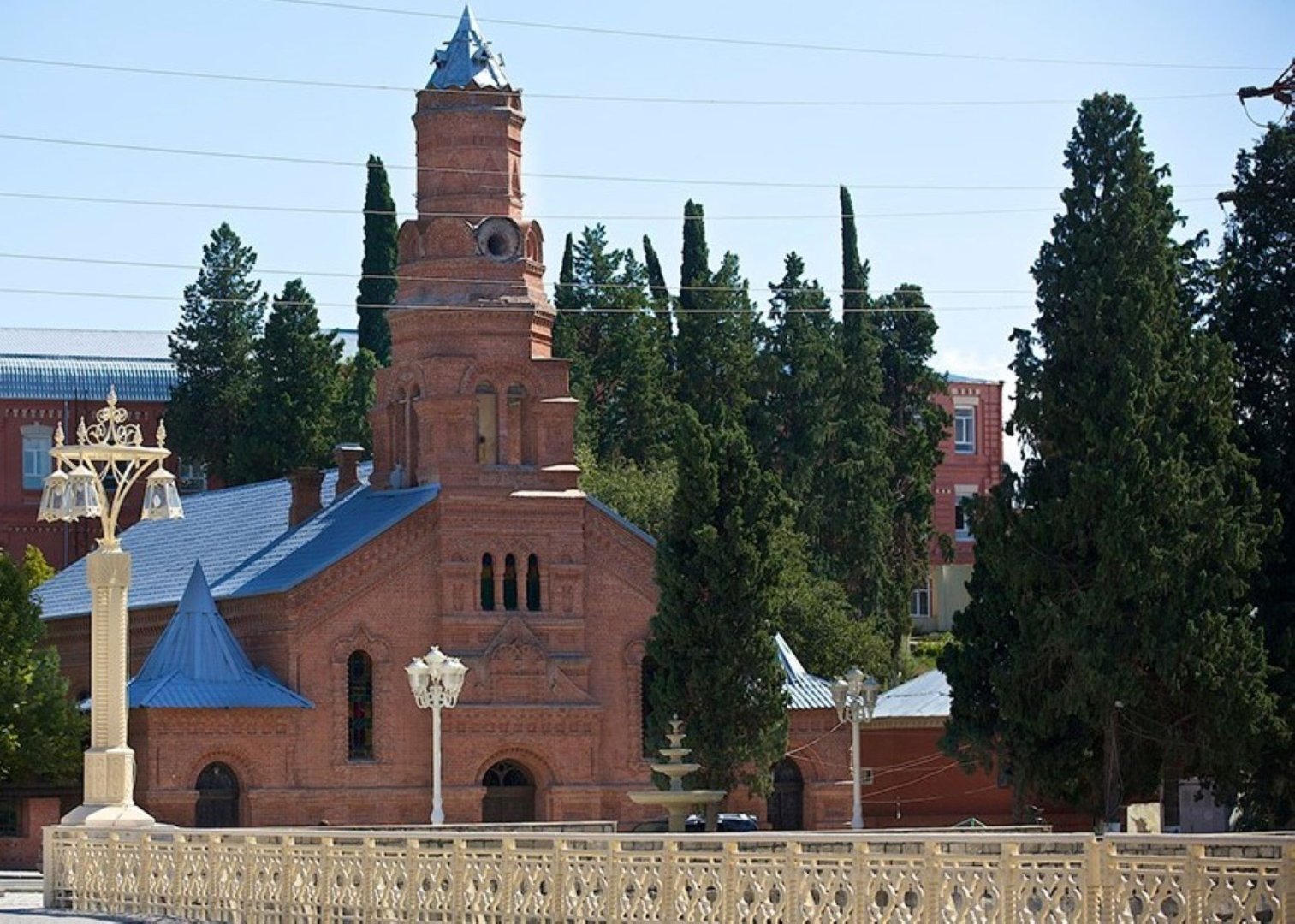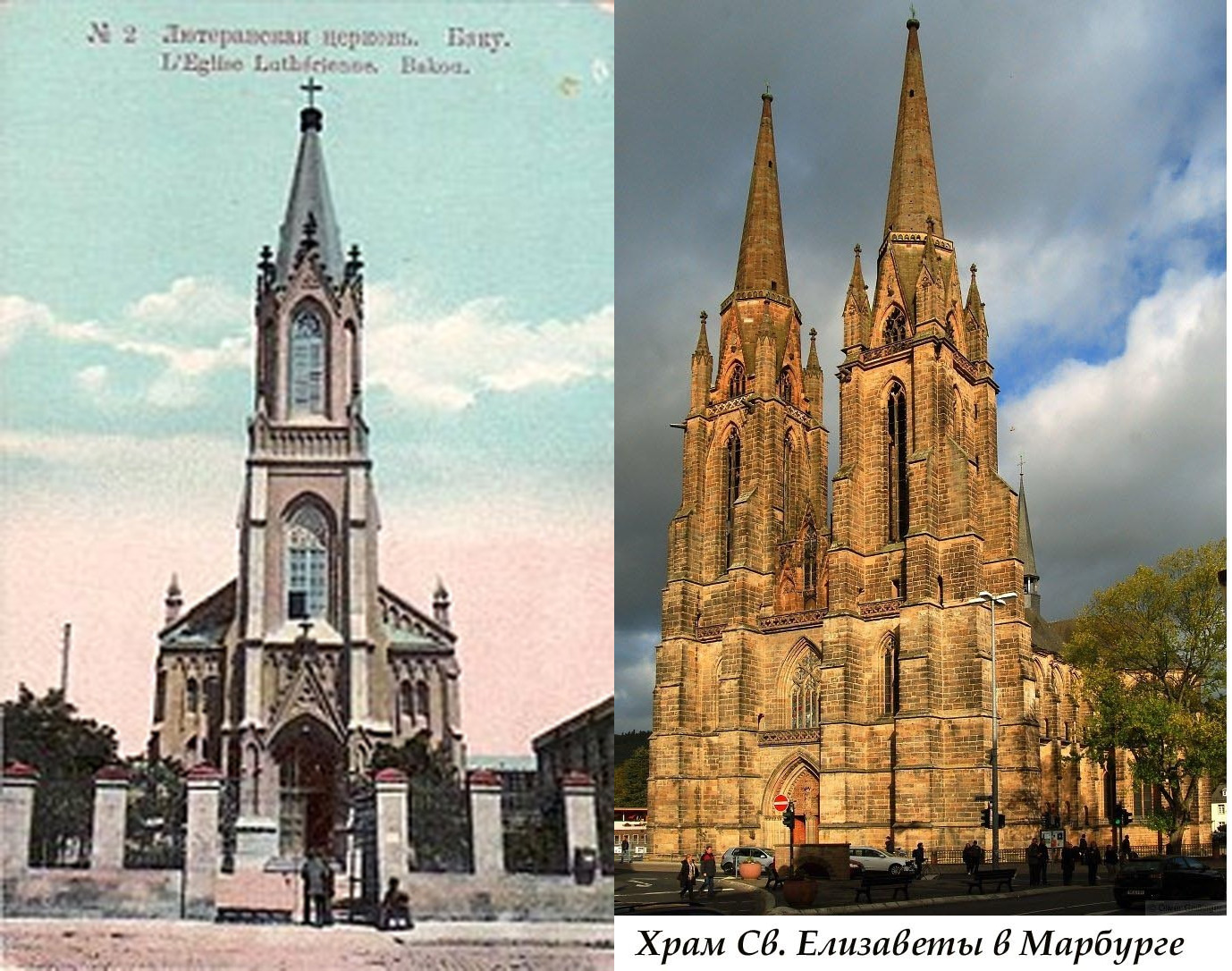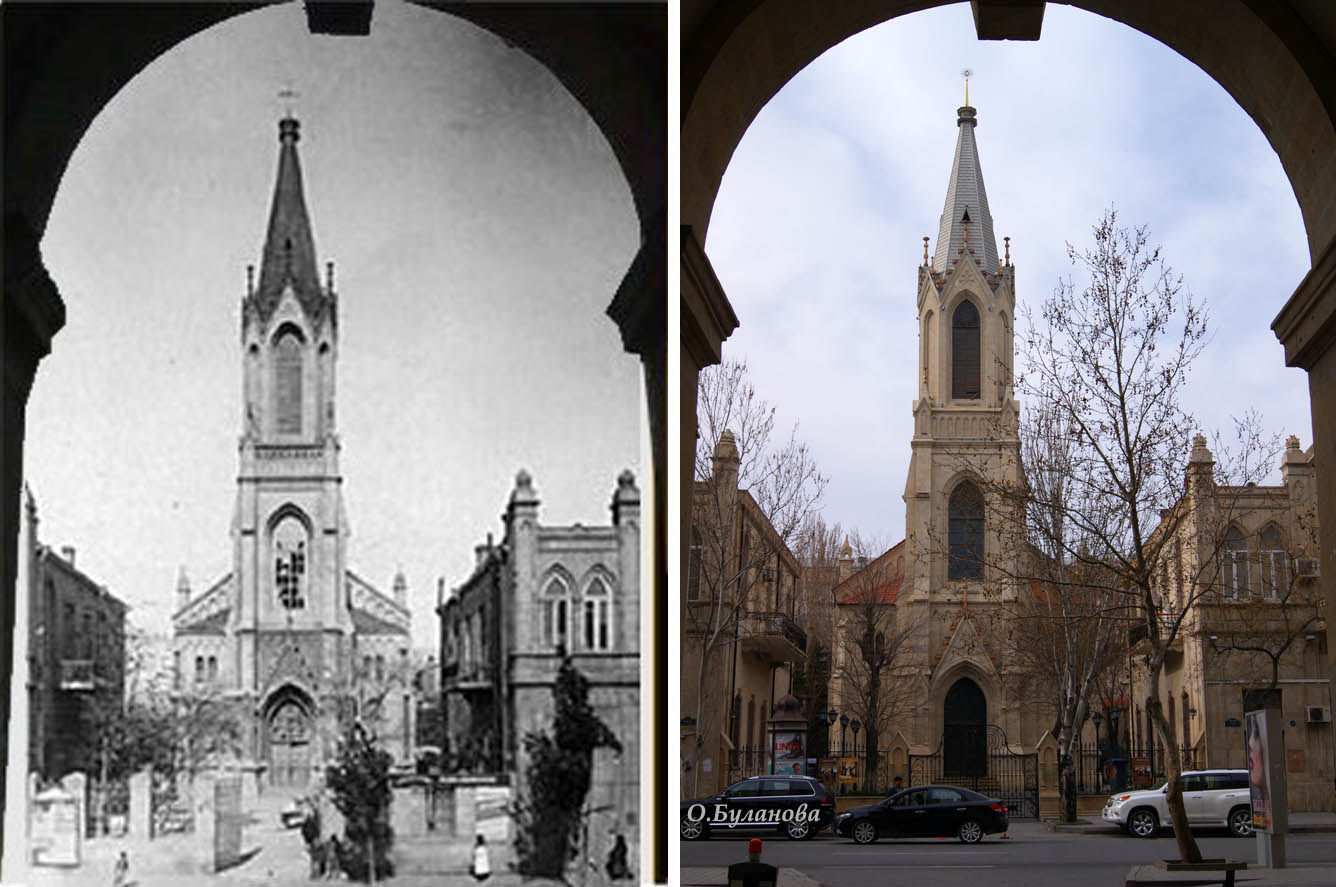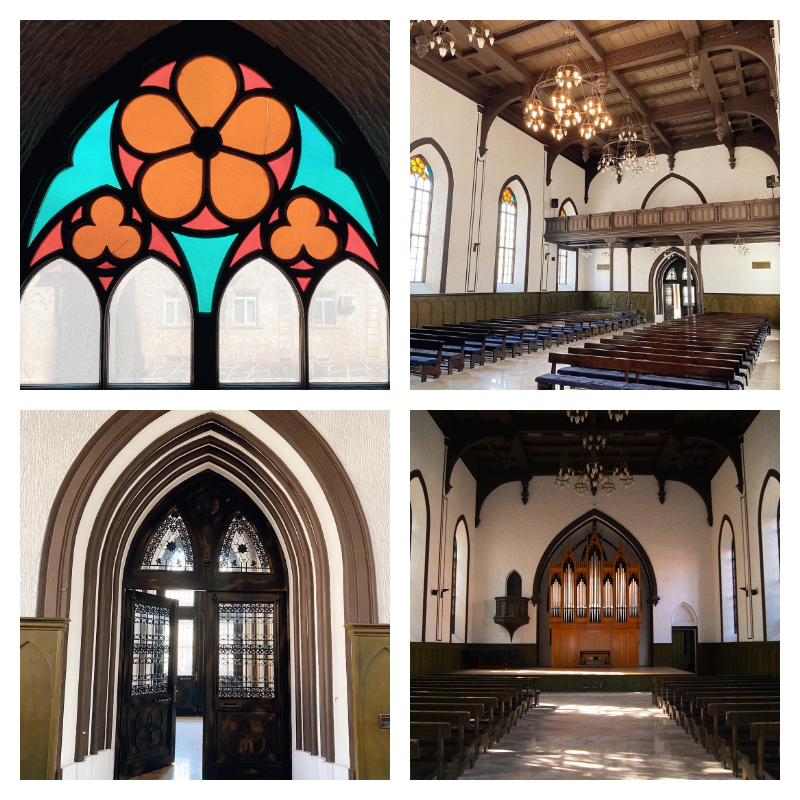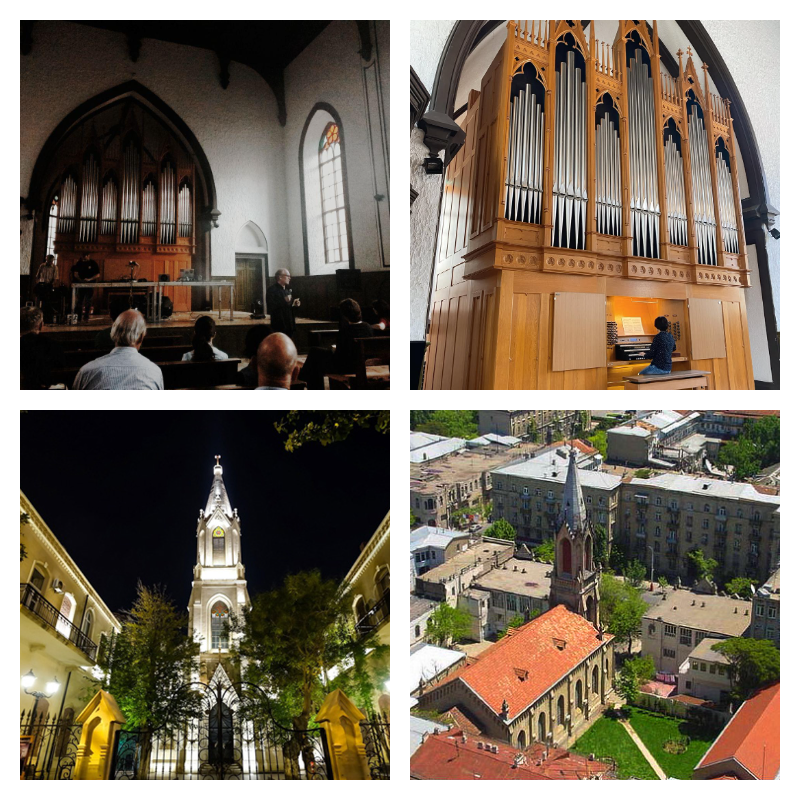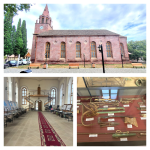BAKU, Azerbaijan, April 20. Azerbaijan, located at the crossroads of East and West, has a rich historical and cultural heritage. In different periods of history, our country became a homeland for representatives of different peoples, cultures and confessions who migrated here. Multiculturalism and tolerance, which have centuries-old historical traditions in Azerbaijan, are important directions of state policy and play a great role in the life of Azerbaijani society.
The careful attitude to the historical heritage, preservation and restoration of the monuments of German culture in the republic at the state level are one of the bright examples of the policy of multiculturalism and tolerance. The resettlement of Germans and their settlement in the territory of Azerbaijan dates back to the first decades of the XIX century. Starting from 1816-1818, a group of German peasants resettled in the South Caucasus, and German settlements were established in Azerbaijan - Elenendorf, Annenfeld, Georgsfeld, Alekseevka, Grunfeld, Eigenfeld, Traubenfeld, Elizavetinka - located mainly in Goygol, Shamkir, Gazakh, Tovuz, Agstafa districts. The German community also settled in Baku city.
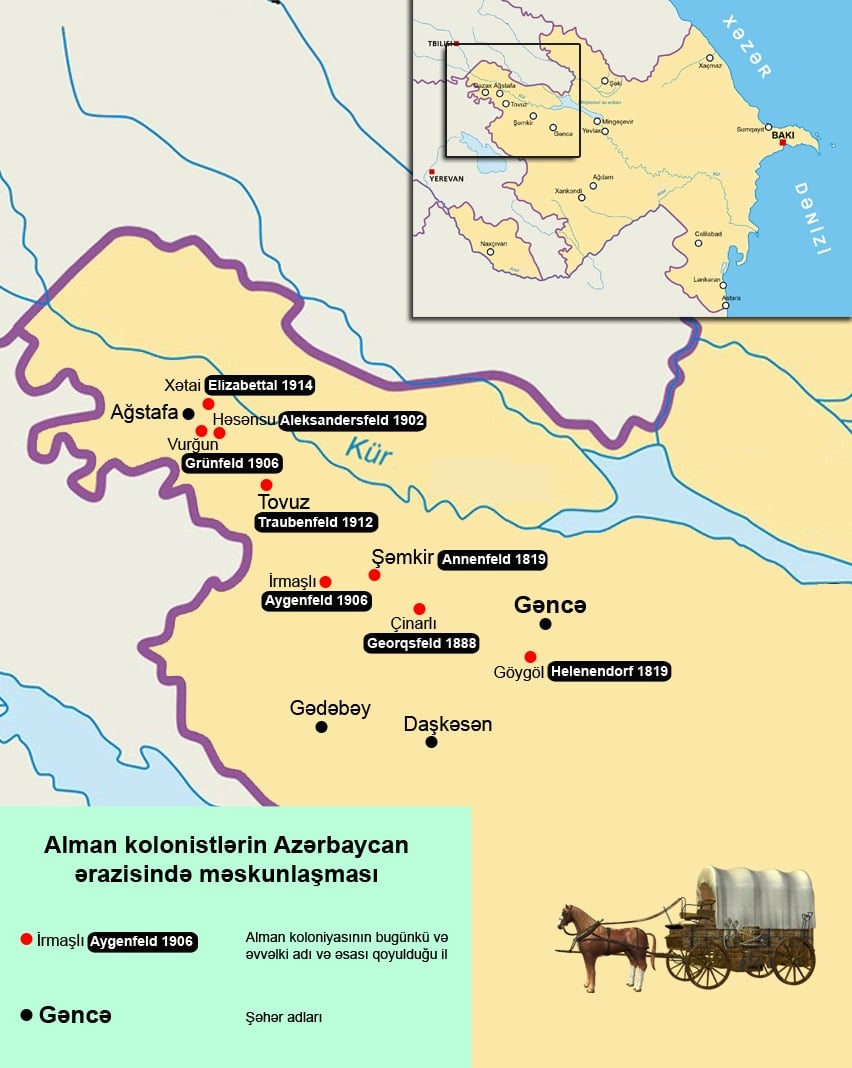
Map of German Settlements
In those years, German schools and joint ventures were established, and, of course, Lutheran kirches. The first Lutheran churches were erected following the designs of German architects A. Eichler and F. Lemkuhl. The lecturer of the Helenendorf College F. Zimmer noted: “The members of the congregation adhere very strictly to church rites. They rarely miss a service and look with prejudice at anyone who does not attend church carefully. As soon as the bells are rung, all members of the family head for church.”
As the number of settlements and inhabitants increased, it became necessary to build religious buildings in different places of Azerbaijan.
In 1817, several hundred families of Swabian Lutheran-pietist natives arrived in the South Caucasus with the permission of Emperor Alexander I. Of them 120 families arrived to the territory of Azerbaijan and founded Helenendorf (Goygol) settlement here. With its foundation the activity of Lutheran community began. The first religious rites were conducted under the guidance of school teacher Jakob Kraus. Later, in 1832, a pastor from Hanover was invited here.
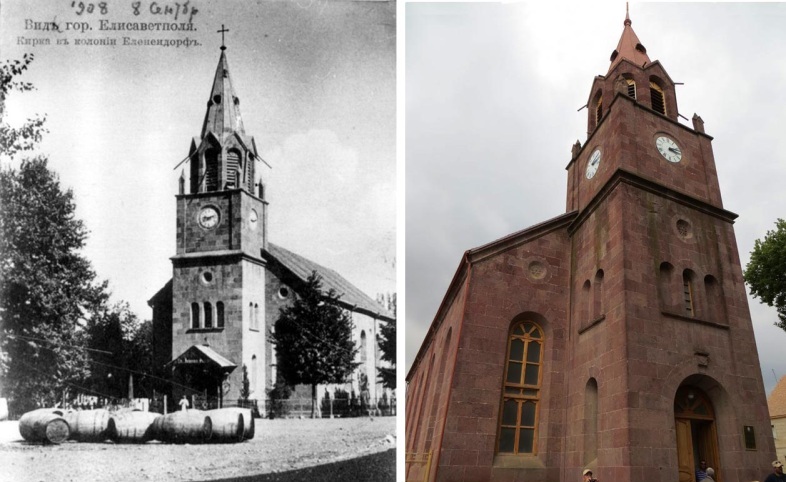
German Church in Helenendorf (Goygol)
In 1854, it was decided to build a stone church building for the Lutheran congregation. On April 24 of the same year, the foundation of the church was laid. The works occupied three years, and on March 10, 1857 the consecration of the new church was held, which was named St. John's Church, becoming the first Lutheran church in Azerbaijan, in honor of which a salute of five cannon shots was given. Georg Heinrich Reitenbach became the first pastor. The church, built in neo-Gothic style, was equipped with an organ manufactured by the company “E.F.Walcker & Cie.” located in Ludwigsburg. The church, built of red stone, has a clock tower, 16 large and 2 small windows and two entrance doors. The windows, doors and ceiling are made of wood, the floor is made of broom tiles and the roof is tiled.
Following Azerbaijan's restoration of independence in 2001, the church was included in the list of immovable monuments of history and culture. In 2008, the building was thoroughly renovated. Currently, the Lutheran Church is protected not only as one of the historical symbols of Goygol district, but also as an example of Azerbaijani multiculturalism. Since 2004, this architectural monument has been functioning as a district history and local history museum. Inside the building there is a special corner reflecting the way of life of Germans and the history of wine-making.
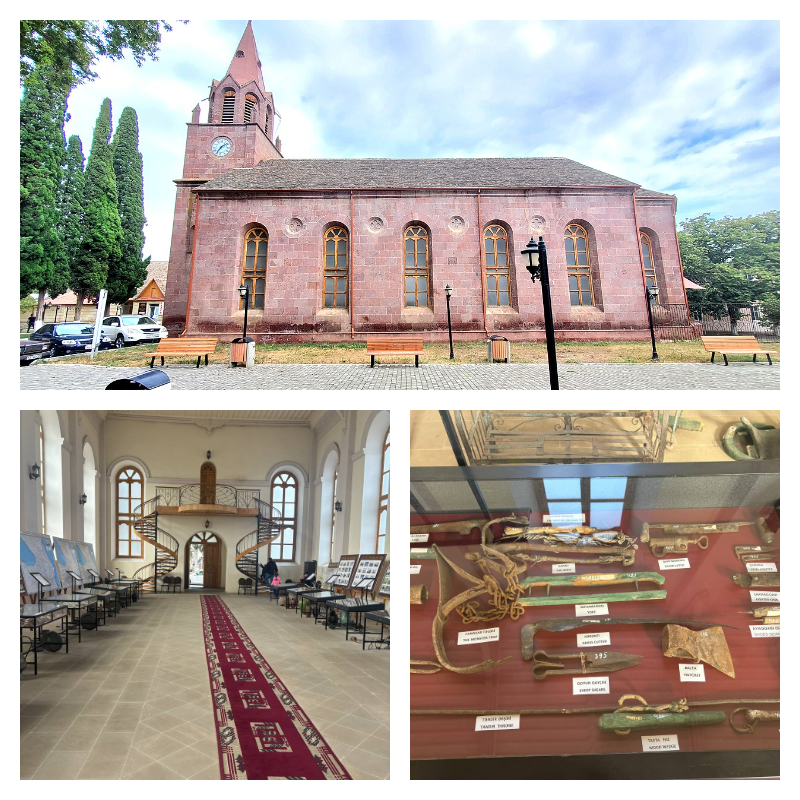
German Church in Goygol
Lutheran Church in Elizavetpol (Ganja) was built in 1885 on the donations of Azerbaijani Muslims for immigrants from Germany. Interestingly, the eclectic style structure was built of tufa. The total area is about 650 square meters. This church was first opened on September 18 in one of the large halls of the Elizavetpol men's gymnasium and was expanded over time.
Inside, the building is divided into a central hall and a foyer. Built in Romanesque-Gothic style, it was characterized by simplicity and expressiveness, a successful choice of place, arranged without much luxury and refinement, which was typical for religious buildings of the Lutheran faith. The German Lutheran Church functioned as a cultural center of Ganja in the years after the Second World War. Since 1986, when the Ganja State Puppet Theater was established, performances for children have been screened here.

Lutheran Church in Ganja
The Church of the Savior in Baku, also known as the Lutheran Church, designed by architect Adolf Eichler in the Neo-Gothic style, is located in the heart of Baku. There is an opinion that Eichler was inspired by the Church of St. Elizabeth in Marburg.
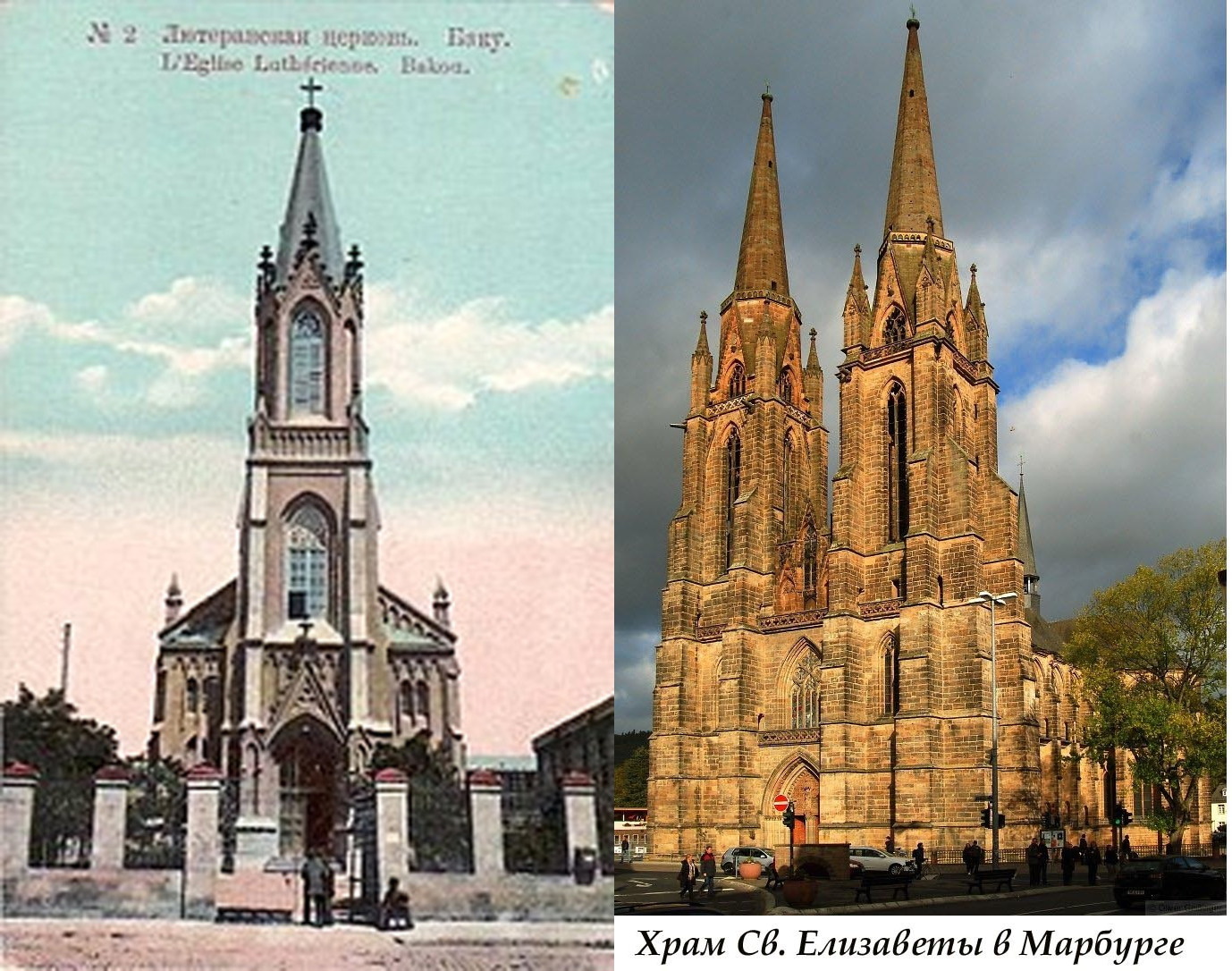
Lutheran Churches in Baku and Marburg
The groundbreaking ceremony took place on March 21, 1896 with the participation of the heads of the Baku City Duma. The consecration ceremony, which took place on March 14, 1899, gathered more than a thousand people, among whom were present the famous oilman Emmanuel Nobel (son of Ludwig Nobel - inventor, entrepreneur and philanthropist, in the future one of the founders of the Nobel Prize), his stepmother and the second wife of Ludwig Nobel.
On June 24, 1898, a thirteen-pound (213 kilograms) gilded cross was erected on the spire of the building. At the beginning of 1899 the church bells and organ were installed. On April 23, 1900, the first concert of organ music was held, at which works by Johann Sebastian Bach were performed.
Interestingly, some time after the assassination of the former First Secretary of the Central Committee of the Communist Party of the Azerbaijan SSR Sergey Kirov in 1934, the Soviet sculptor Pinhos Sabsai received an order to erect a monument to Kirov in Baku. He required a room with very high ceilings, which could accommodate the sculpture together with the pedestal. Sabsai asked the kirch to provide him with a workshop. Despite the fact that at that time there was an order to demolish the kirk, Sabsai was allowed to do so.
Following repair and restoration works carried out on the order of the head of state, the building of the former Lutheran church in Baku, the Chamber and Organ Music Hall of the Azerbaijan State Philharmonic named after Muslim Magomayev, was inaugurated in 2010, attended by President of Azerbaijan Ilham Aliyev and First Lady Mehriban Aliyeva. Throughout these years, various concert programs, including those of foreign masters, and creative evenings have been constantly held here.

Lutheran Church in Baku – Past and Present
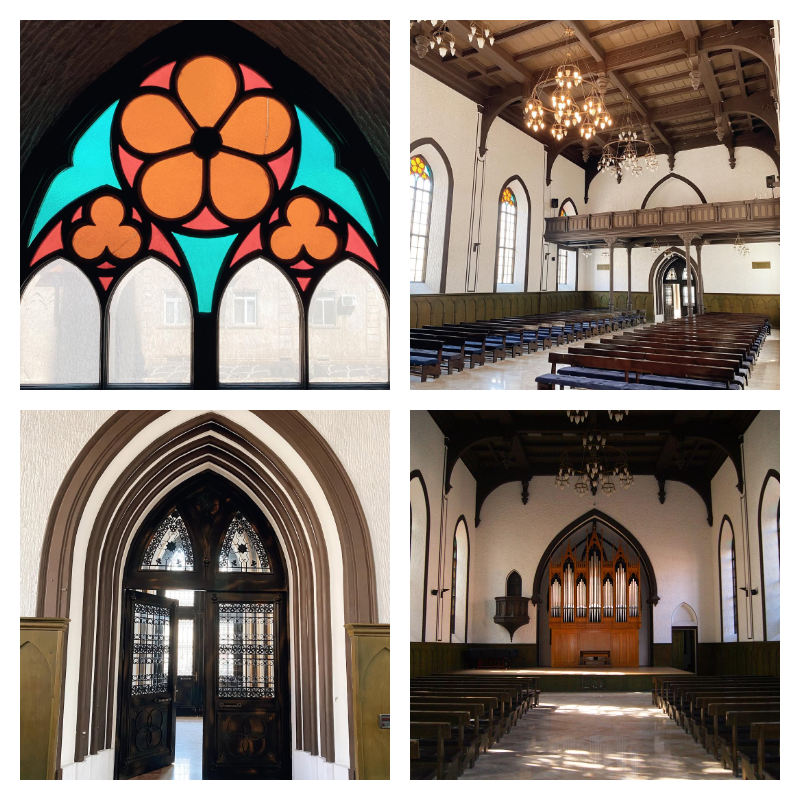
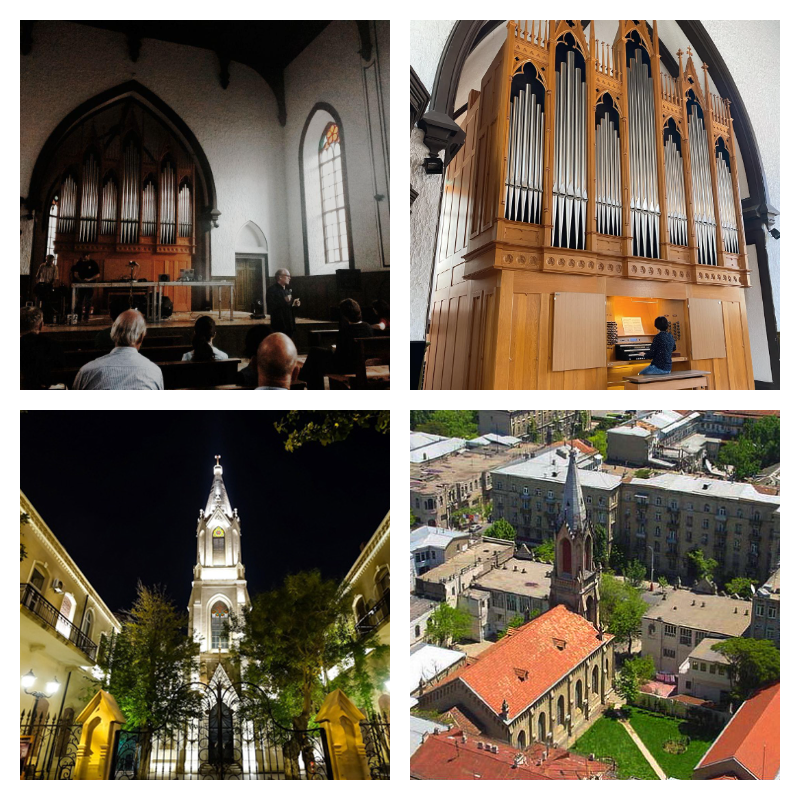
Lutheran Church in Baku
The Lutheran Church in Annenfeld (Shamkir) was built in 1909, also in neo-Gothic style, on donations from businessmen Johann Beppl and Johann Beck. The architect was Ferdinand Lemkuhl. Its consecration in 1911 was carried out by Baron von Engelhardt, Ober-pastor of the Transcaucasian Evangelical Lutheran Communities. During the Soviet years the building was used as a House of Culture, House of Teachers, and since 1980s as a historical and ethnographic museum. After Azerbaijan regained its independence, the church building was included in the list of historical and cultural monuments. A museum describing the life history of the German community was created, and interesting photographs and household items were presented.
In 2012-13, on the initiative of the Ministry of Culture and Tourism of Azerbaijan, the church was thoroughly reconstructed, an organ was installed, recreated based on the surviving drawings, on which teachers of the local music school now play during festive events. The carefully restored church has regained its former beauty and elegance. The reconstruction works carried out within the framework of the Heydar Aliyev Foundation's project “Azerbaijan - Address of Tolerance” became another indicator of the mission to maintain the historical past and religious and cultural values of our state. In 2013, President of Azerbaijan Ilham Aliyev familiarized himself with the restored building of the German Lutheran Church in Shamkir.
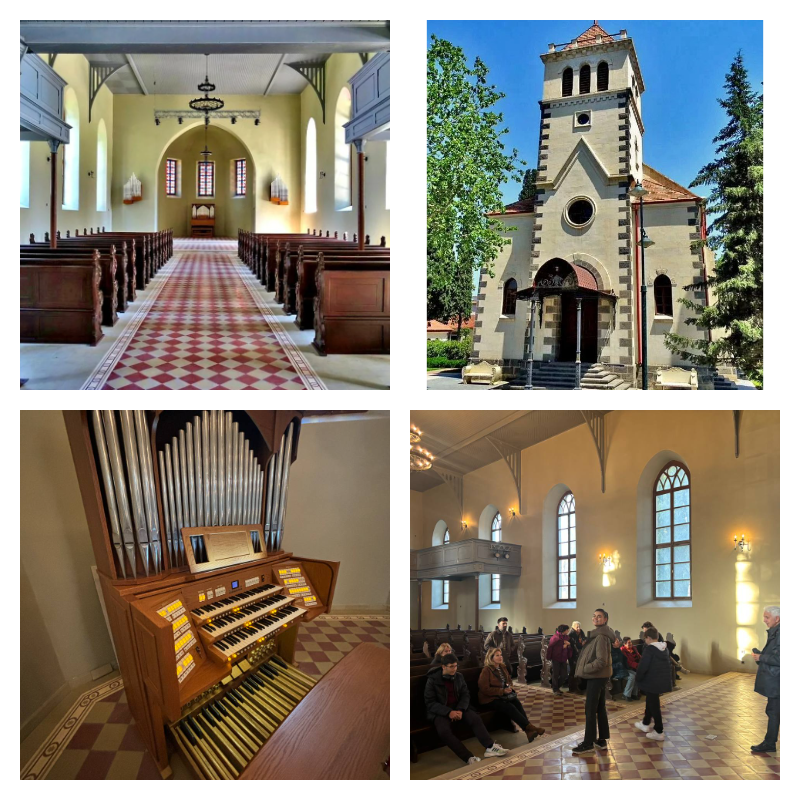
Lutheran Church in Shamkir
German cultural heritage in Azerbaijan is carefully protected by the state. Multiculturalism and tolerance, which have centuries-old historical traditions in Azerbaijan, are important directions of state policy and play a great role in the life of Azerbaijani society.

